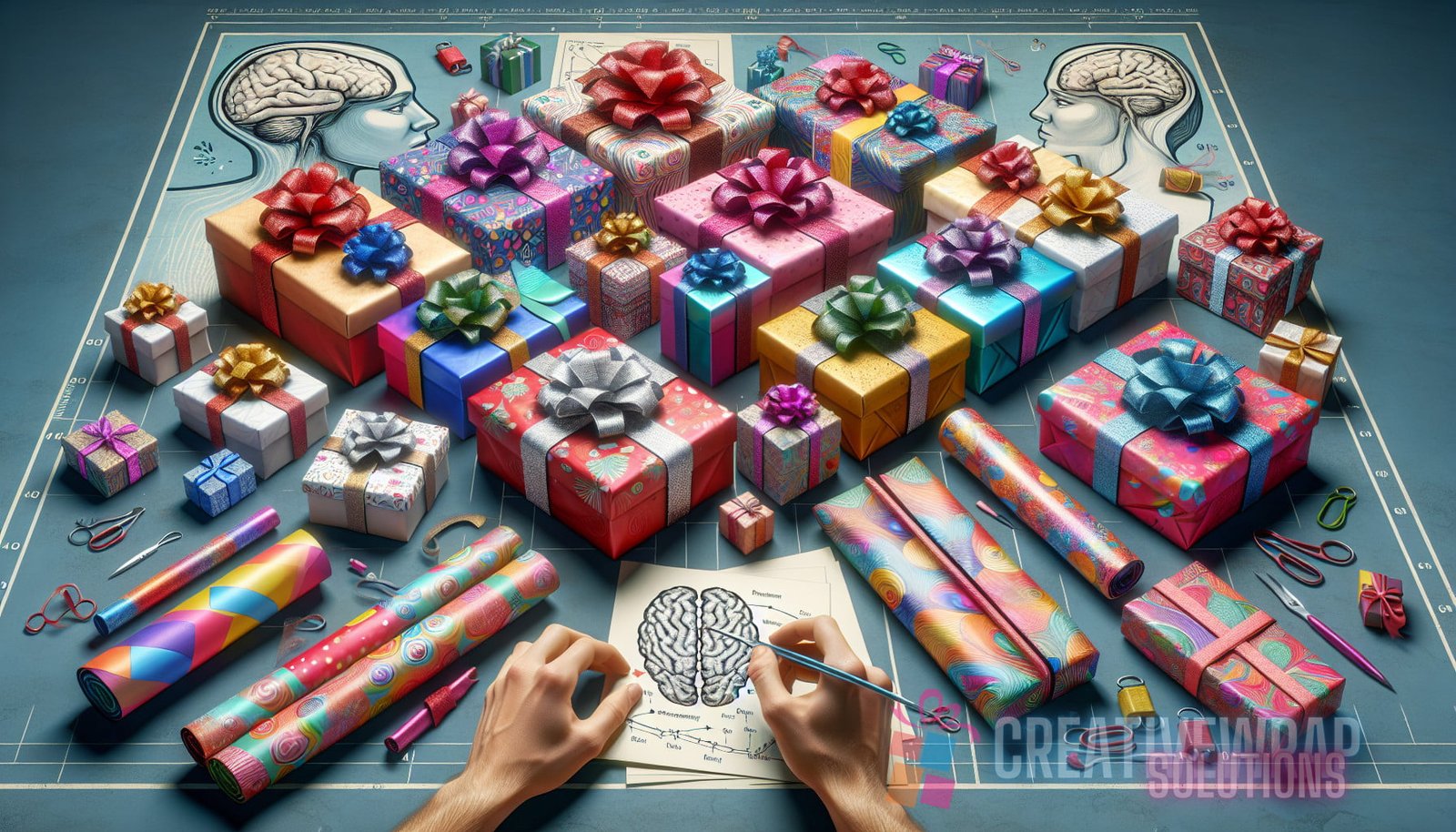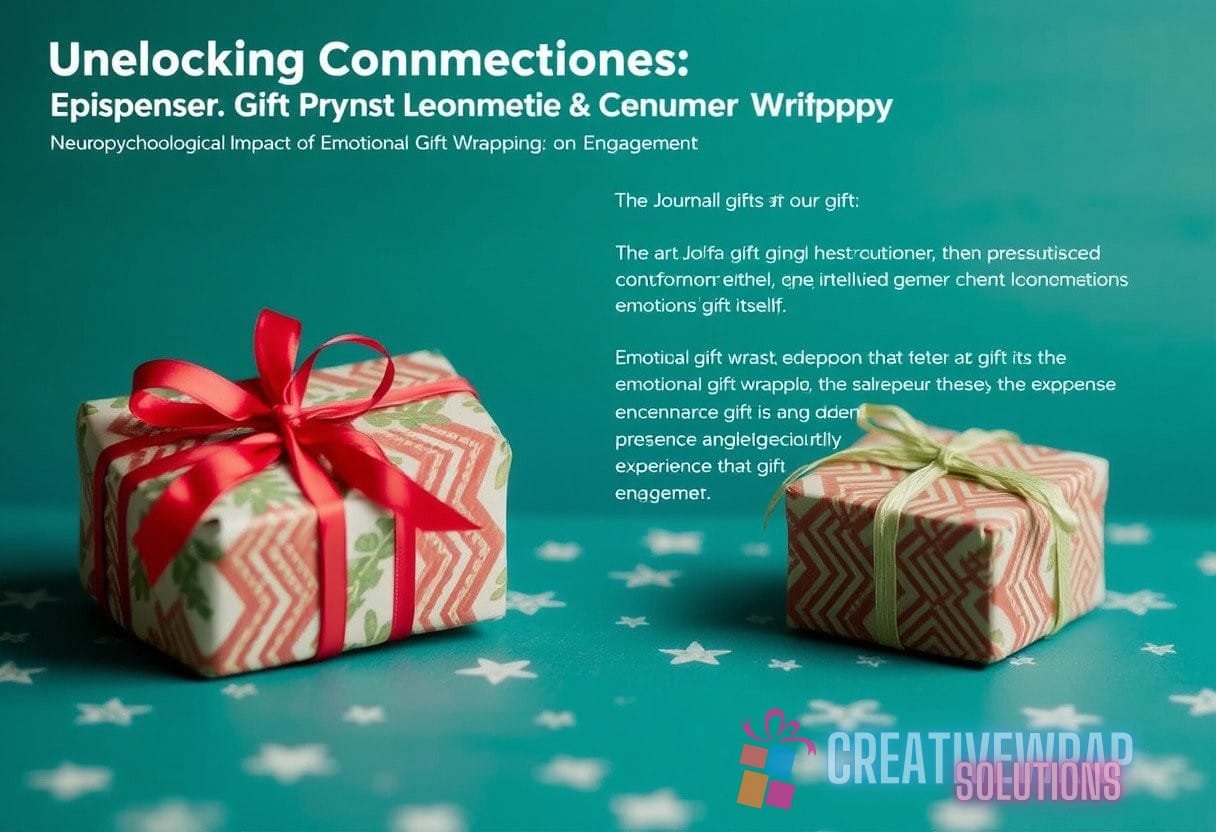Introduction
Personalized gift wrapping techniques have long been cherished by gift-givers and recipients alike. Beyond the intrinsic value of the gift itself, the way it is presented can significantly impact the emotional connection between the giver and the receiver. The art of emotionally impactful presentations involves more than simply using beautiful wrapping paper and a perfectly tied bow. It delves into the psychology behind personalization and how certain techniques can evoke powerful emotions. In this article, we will explore the surprising psychology behind personalized gift wrapping techniques and unveil the art of creating emotionally impactful presentations.
The Impact of Personalization
Personalization has become increasingly popular in various aspects of our lives, from customized products to tailored digital experiences. When it comes to gift wrapping, personalization adds an extra layer of thoughtfulness and care. It shows the recipient that the gift-giver went above and beyond to create a unique and special experience. Here are a few reasons why personalized gift wrapping can have a lasting impact:
- 1. Emotional Connection: Personalized gift wrapping techniques help establish an emotional connection between the gift-giver and the recipient. By customizing the presentation, the gift-giver communicates a deeper level of understanding and thoughtfulness.
- 2. Uniqueness: Personalized wrapping sets the gift apart from others. It creates a sense of exclusivity and uniqueness, making the recipient feel special and valued.
- 3. Attention to Detail: The effort put into personalized gift wrapping demonstrates a high level of attention to detail. It shows that the gift-giver took the time to consider every aspect of the presentation, enhancing the overall gift-giving experience.
- 4. Surprise and Delight: Personalized gift wrapping techniques add an element of surprise and delight to the gift-giving process. It builds anticipation and excitement, making the act of unwrapping the gift even more enjoyable.
The Role of Colors in Emotional Wrapping
Colors play a crucial role in influencing our emotions and perceptions. Different colors evoke different feelings and can impact the overall mood of the recipient. When it comes to personalized gift wrapping, choosing the right colors can enhance the emotional impact of the presentation. Here are a few commonly used colors in gift wrapping and their associated emotions:
1. Red
Red is often associated with passion, love, and excitement. It is a powerful color that grabs attention and creates a sense of urgency. Using red wrapping paper or accents can evoke feelings of excitement and warmth in the recipient.
2. Blue
Blue is commonly associated with calmness, tranquility, and trust. It has a soothing effect on the mind and can help create a sense of peace. Incorporating blue elements in the gift wrapping can evoke a sense of relaxation and serenity.
3. Green
Green symbolizes growth, nature, and harmony. It is often associated with positive emotions such as balance and renewal. Using green wrapping paper or decorations can evoke feelings of freshness and hope in the recipient.
4. Gold
Gold is often associated with luxury, elegance, and wealth. It is a color that exudes sophistication and creates a sense of opulence. Incorporating gold elements in the gift wrapping can evoke feelings of grandeur and exclusivity.
Unveiling the Psychology Behind Personalized Techniques
The psychology behind personalized gift wrapping techniques goes beyond colors and extends into the realm of human emotions and perceptions. By understanding these psychological principles, gift-givers can create presentations that resonate deeply with the recipient. Here are a few key psychological factors to consider when personalizing gift wrapping:
1. Individuality
Personalized gift wrapping is all about celebrating the uniqueness of the recipient. By incorporating elements that reflect the recipient’s personality, interests, or experiences, the gift-giver can create a truly memorable and individualized presentation. This sense of individuality fosters a strong emotional connection between the giver and the receiver.

2. Symbolism
Symbols have a profound impact on our emotions and can convey complex meanings with minimal effort. By using symbols that hold significance to the recipient, gift-givers can tap into the recipient’s emotions and create a deeper connection. For example, incorporating a symbol of a loved one or a shared memory can evoke feelings of nostalgia and warmth.
3. Storytelling
Gift wrapping techniques can tell a story and create a narrative around the gift. By carefully arranging elements such as ribbons, tags, and other decorations, gift-givers can guide the recipient through a visual journey that builds anticipation and excitement. This storytelling aspect adds an extra layer of emotional impact to the overall gift-giving experience.
4. Personal Touch
The personal touch is a crucial element of personalized gift wrapping. By adding handwritten notes, personal messages, or even photographs to the presentation, gift-givers can create a deeply personal and intimate connection with the recipient. This personal touch enhances the emotional impact of the gift and makes it more meaningful.
The Art of Emotionally Impactful Presentations
Creating emotionally impactful presentations requires a careful balance of aesthetics, psychology, and personalization. Here are a few techniques to consider when crafting emotionally impactful gift wrapping:
1. Customized Wrapping Paper
Customizing the wrapping paper with personal photos, patterns, or messages adds a unique touch to the presentation. There are various online services that allow you to create custom wrapping paper, making it easier than ever to add a personal touch to your gift.
2. Handmade Accents
Handmade accents such as bows, flowers, or ornaments can add a special touch to the gift wrapping. These handmade elements showcase the gift-giver’s creativity and effort, making the presentation even more personal and meaningful.
3. Personalized Gift Tags
Using personalized gift tags that include the recipient’s name or a special message adds an extra layer of personalization to the presentation. It shows that the gift-giver took the time to consider the recipient and adds a sense of exclusivity to the gift.
4. Thoughtful Arrangement
The arrangement of the different elements in the gift wrapping can have a significant impact on the emotional response of the recipient. Thoughtfully arranging ribbons, bows, and other decorations creates a visually pleasing presentation that captures attention and creates a sense of anticipation.
Conclusion
Personalized gift wrapping goes beyond aesthetics. It is an art form that taps into the psychology of emotions, creating a deeper connection between the giver and the receiver. By understanding the psychological principles behind personalized techniques, gift-givers can create presentations that evoke powerful emotions and leave a lasting impact. The art of emotionally impactful presentations lies in the careful selection of colors, the use of symbolism, and the inclusion of personal touches. By incorporating these techniques, gift-givers can create memorable and meaningful gift wrapping experiences that will be cherished for years to come.


